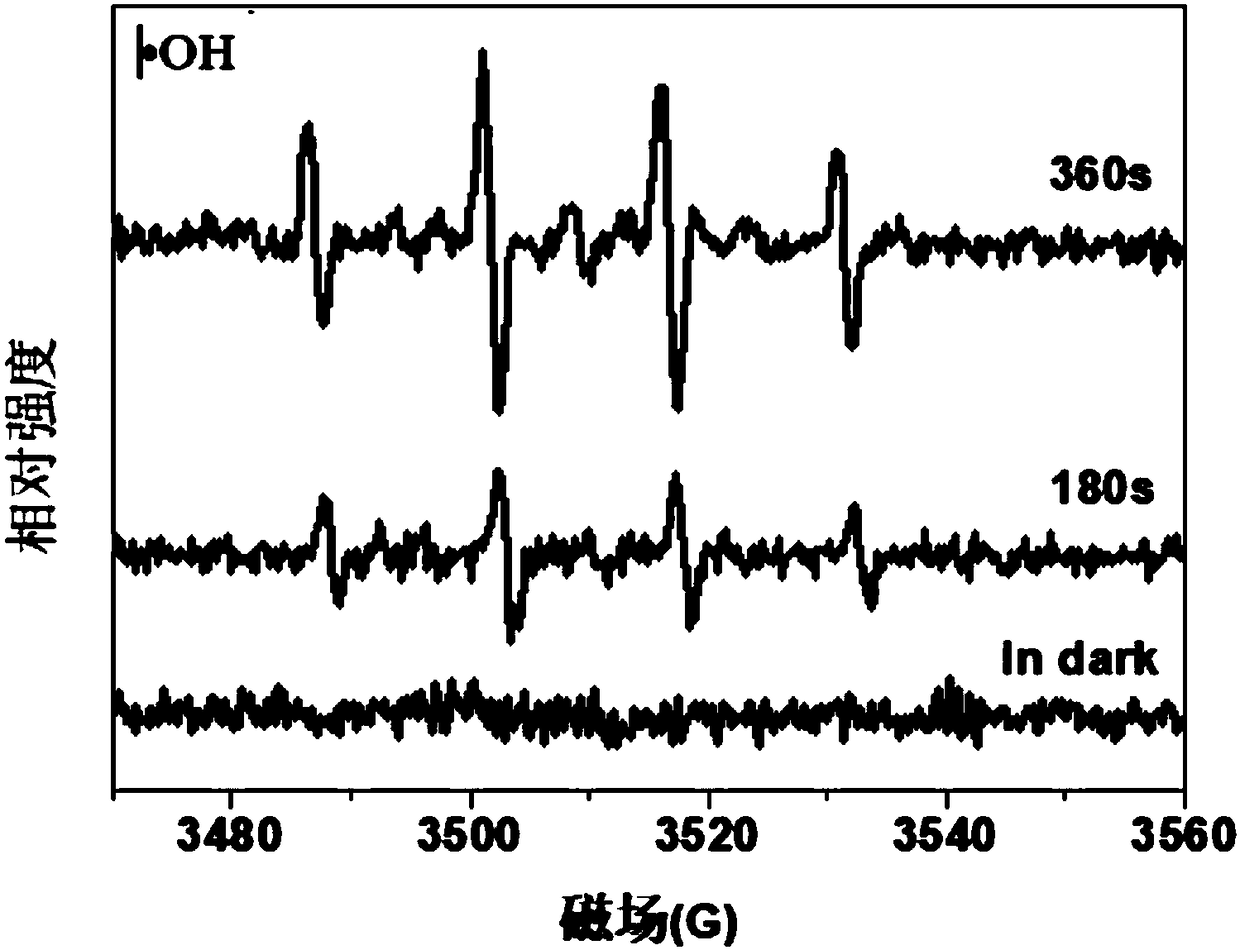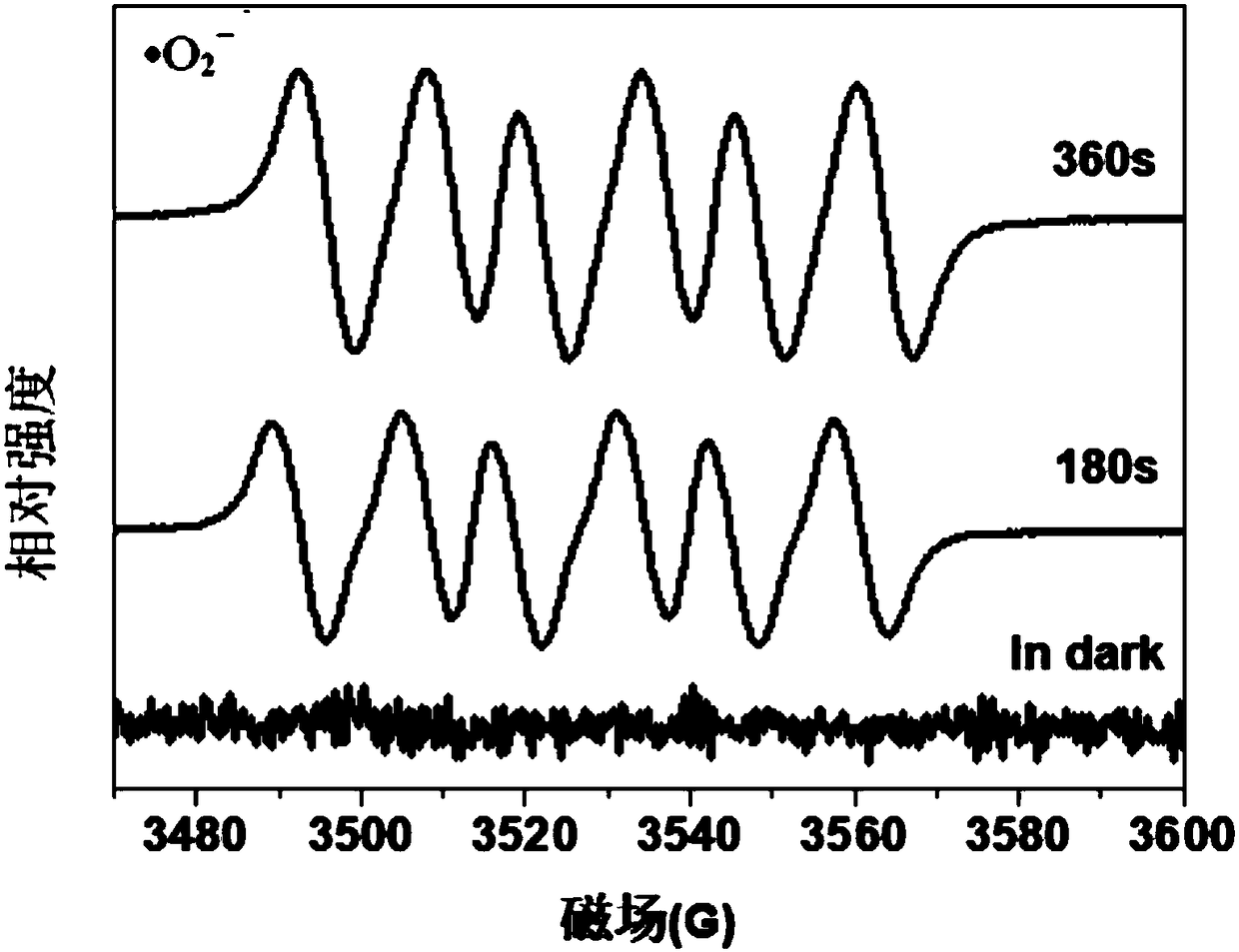Method for utilizing nitrate ions to degrade and decolorize dye
A nitrate ion and dye technology, applied in chemical instruments and methods, water pollutants, water treatment of special compounds, etc., can solve problems such as secondary pollution and unsatisfactory treatment, and achieve fast degradation speed, low cost, and reaction conditions. mild effect
- Summary
- Abstract
- Description
- Claims
- Application Information
AI Technical Summary
Problems solved by technology
Method used
Image
Examples
Embodiment 1
[0026] A method utilizing nitrate ion to decolorize dyestuffs, comprising the following steps:
[0027] (1) Sodium nitrate is added in the solution dyed by azo dye methyl red, and the initial concentration of methyl red is 10mg / L, so that the nitrate ion concentration in the solution is 4g / L;
[0028] (2) Place the solution obtained in step (1) in a beaker with an opening diameter of 12 cm and constantly stir it with a magnet. A medium-pressure mercury lamp is placed directly above the opening of the beaker as an ultraviolet light source. The surface height is 11cm, the power of the medium pressure mercury lamp is 375W, the characteristic wavelength is 365nm, and the irradiance is 18300μW / cm 2 , and control the reaction temperature of the solution to be 20°C.
Embodiment 2
[0030] A method utilizing nitrate ion to decolorize dyestuffs, comprising the following steps:
[0031] (1) adding sodium nitrate to the solution dyed by the heterocyclic dye saffron red T, the initial concentration of saffron red T is 10 mg / L, so that the nitrate ion concentration in the solution is 4 g / L;
[0032] (2) Place the solution obtained in step (1) in a beaker with an opening diameter of 12 cm and constantly stir it with a magnet. A medium-pressure mercury lamp is placed directly above the opening of the beaker as an ultraviolet light source. The surface height is 11cm, the power of the medium pressure mercury lamp is 375W, the characteristic wavelength is 365nm, and the irradiance is 18300μW / cm 2 , and control the reaction temperature of the solution to be 20°C.
Embodiment 3
[0034] A method utilizing nitrate ion to decolorize dyestuffs, comprising the following steps:
[0035] (1) Sodium nitrate is added in the solution dyed by quinone dye methylene blue, and the initial concentration of methylene blue is 10mg / L, so that the nitrate ion concentration in the solution is 0.01g / L;
[0036] (2) Place the solution obtained in step (1) in a beaker with an opening diameter of 12 cm and continuously stir it with a magnet. Place a xenon lamp directly above the opening of the beaker as an ultraviolet light source. The distance between the xenon lamp and the liquid level in the beaker is 11 cm. , xenon lamp power is 500W, irradiance is 18300μW / cm 2 , and control the reaction temperature of the solution to be 15°C.
PUM
 Login to View More
Login to View More Abstract
Description
Claims
Application Information
 Login to View More
Login to View More - R&D
- Intellectual Property
- Life Sciences
- Materials
- Tech Scout
- Unparalleled Data Quality
- Higher Quality Content
- 60% Fewer Hallucinations
Browse by: Latest US Patents, China's latest patents, Technical Efficacy Thesaurus, Application Domain, Technology Topic, Popular Technical Reports.
© 2025 PatSnap. All rights reserved.Legal|Privacy policy|Modern Slavery Act Transparency Statement|Sitemap|About US| Contact US: help@patsnap.com



